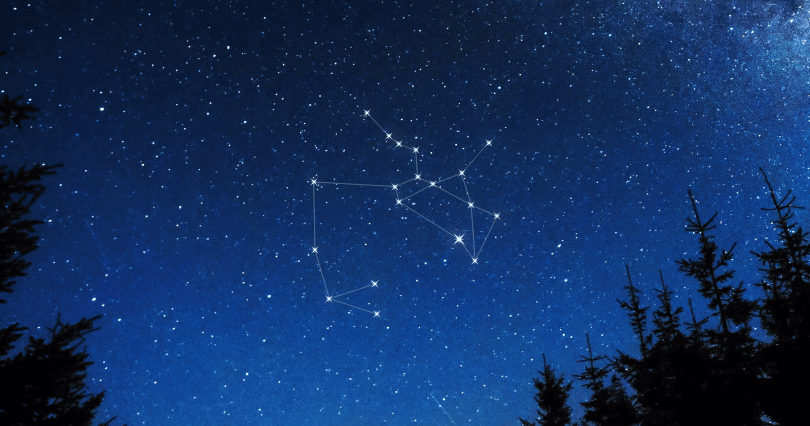Sagittarius Constellation

Sagittarius constellation is one of the largest constellations in the night sky, located in the southern hemisphere. The constellation represents the archer and is associated with the Crotus from ancient mythology. Sagittarius is a member of the Zodiac family of constellations and its symbol is ♐. It’s not that hard to find it since this is the largest constellation in the southern sky – it lies on the Milky Way and its stars form an asterism Teapot. The constellation was first cataloged and spotted by a famous astronomer who lived in Greece Ptolemy in his list of 48 then-known constellations. Sagittarius constellation was however known long before that to many other cultures and civilizations. Sagittarius is now officially recognized and listed as one of the modern-known constellations by the International Astronomical Union and is usually depicted as a centaur with bow and arrow.
How to find Sagittarius constellation?
Sagittarius is the 15th largest constellation in the sky and it liest in the fourth quadrant of the southern hemisphere. The constellation could be easily seen at latitudes between +55° and -90°, to all observers from both hemispheres. Nearby are these constellations: Scutum, Corona Australis, Indus, Microscopium, Aquila, Ophiuchus, Scorpius, Serpens, and Telescopium. Sagittarius belongs to the Zodiac family of constellations, along with these constellations: Aries, Gemini, Cancer, Leo, Virgo, Libra, Scorpius, Capricornus, Pisces, and Aquarius.
Major stars in Sagittarius constellation
This constellation contains several notable stars, not brighter than the magnitude 3.0. The brightest star in Sagittarius is Kaus Australis or Epsilon Sagittarii, with magnitude 1.79 and 9.69 light-years away from our Solar system.
Sagittarius contains 15 Messier objects, and 32 stars in total, most of them with its confirmed planets. There aren’t any meteor showers linked to this constellation. Sagittarius is home for many notable deep sky objects and among them are Messier 8, Messier 17, Messier 24, the Bubble Nebula, the Galactic center, the red dwarf MOA-2009-BLG-387L, etc.
Mythology
The constellation was first introduced by Ptolemy in the 2nd century but was known long before that too many other cultures and civilizations like Roman, Egyptian and Babylonian.
In ancient Greece, Sagittarius is depicted as a centaur – half human half horse mythology creature who had four legs like a horse, and head and torso of a man. It is shown as archer holding a bow with an arrow, and is aiming toward the heart of constellation Scorpio and its brightest star Antares. In other variations, Sagittarius is wrongly interpreted as a centaur Chiron, who is placed in the night sky as constellation Centaurus.
Summers linked this constellation with the mythical creature Crotus – the nurse to the nine Muses, a monster with two feet and a satyr’s tail. This image was depicted by Eratosthenes who referred to it as a satyr. Crotus was an archer and the son of Pan, and he lived on Mount Helicon. He was the one who invented archery, and thanks to the Muses and their good and kind words, Zeus decided to place his image among stars as Sagittarius constellation and honor him like that for his service to the mankind.
Babylonians know a different story and they link this constellation with Nergal – the centaur god that had one panther and one human head. Since he was a hybrid, he had white wings and the stinger of a scorpion.


